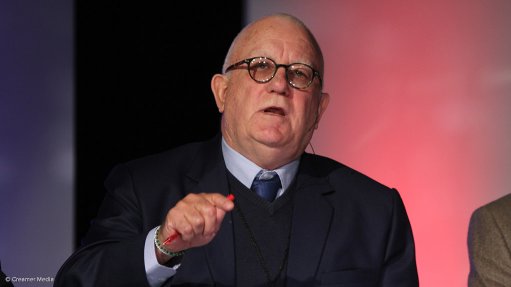
DTI deputy director-general Garth Strachan
Photo by: Duane Daws
A senior Department of Trade and Industry (DTI) official has admitted that the roll-out of South Africa’s industrial policy has, to date, been “suboptimal”, partly owing to a lack of coordination within government on key elements of the policy, including local procurement by departments and State-owned companies (SoCs) of designated products from domestic manufacturers.
Through the Preferential Procurement Policy Framework Act, Trade and Industry Minister Dr Rob Davies has the authority to direct government departments, agencies and SoCs to procure specifically selected products and services from local manufacturers, or providers.
Over the past few years a number of designations have been made, covering everything from transport and energy equipment through to canned-food products and uniforms. The upcoming designations, which were unveiled together with the latest Industrial Policy Action Plan (Ipap), cover transformers, power-line hardware and structures, steel conveyance pipes, mining and construction vehicles and building and construction materials.
Speaking at the Steel and Engineering Industries of Southern Africa inaugural Metals and Engineering Indaba, deputy director-general Garth Strachan said that although 16 product categories had already been designated for local procurement, with a further 14 to be added soon, compliance remained weak.
“The critical question, with the designations and the Competitive Supplier Development Programme, is can we secure compliance across government?” Strachan stated, adding that the lack of compliance was sometimes “willful”, but at other times related directly to procurement capacity gaps in the public sector.
The DTI viewed local procurement as a key instrument for stimulating reindustrialisaiton and the latest Ipap outlined a three-pronged strategy to improve adherence to the designations. The strategy included making compliance an audit requirement, improving procurement training and ramping up monitoring and evaluation.
Strachan argued that similar local-content programmes had been important to bolstering manufacturing in other countries, including the US, where major infrastructure and capital equipment procured by the public sector were purchased from American plants.
South Africa, he argued, required a higher impact, “laser-focused national industrial policy and strategy”, that included localisation, but also incentives and, where necessary, even protection for local industry. “There are no policy instruments . . . that are not on the table, including tariff measures,” he asserted.
Democratic Alliance shadow trade and industry minister Geordin Hill-Lewis concurred that the decline in manufacturing needed to be arrested. But he said that, besides the current power constraint, policy incoherence remained the leading constraint to the sector’s revival.
The indaba took place against a backdrop of an ongoing shrinking in the contribution of manufacturing to the South African economy and weakening contribution of manufacturing to economic growth. Real gross domestic product (GDP) increased by only 1.3% during the first quarter of 2015, with the manufacturing industry making a negative contribution of -0.3 of a percentage point.
Apart from the recent “confusion” over the broadbased components in the black economic empowerment scorecard, Hill-Lewis argued that the DTI had presented a slew of legislative and policy changes that were undermining investor confidence, including manufacturing investor confidence.
DEVELOPMENTAL STEEL PRICE
ArcelorMittal South Africa (AMSA) CEO Paul O’Flaherty argued that an improvement in the performance of the metals and engineering sector would also require greater collaboration between the public and private sectors on issues such a electricity, logistics and input costs.
But he also reiterated the steel producer’s willingness to move towards a “developmental steel price”, which government had long held up as being an obstacle to downstream manufacturers.
O’Flaherty provided no details on a possible pricing remedy, indicating only that AMSA could seek some additional protection, as well as higher levels of steel localisation in return.
Strachan argued that South African steel had for years been in the highest price quartile internationally, but confirmed that government was working to both “save” steel producers in distress and move prices into the “lowest quartile”.
The Economic Development Department had set up an independent steel panel to interrogate the options, with Economic Development Minister Ebrahim Patel indicating recently that the panel would look at assessing “ways to enable a more competitive steel price for downstream users so that we stimulate local demand for steel”.